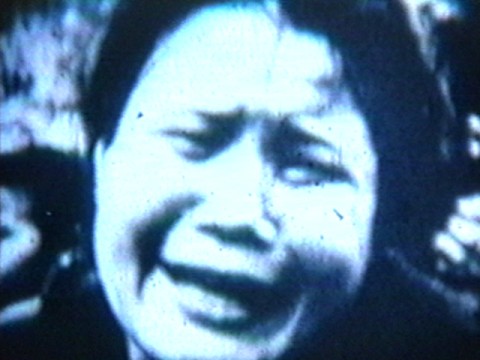Since the 1960s, Carolee Schneemann has worked with media as diverse as painting, drawing, dance, performance, film, and installation. Throughout she has maintained a reputation for provocatively addressing human sexuality from a personal perspective, an approach evident in one of her early and well-known works, Interior Scroll (1975). For this performance piece—which was presented first at a conference in East Hampton, New York, and later at a film festival in Telluride, Colorado—Schneemann stood naked on a table, painted herself with mud, and pulled a paper scroll from her vagina as she read it aloud. The text recounts the artist’s recent encounter with a male filmmaker who dismissed her as not much more than a charming dancer and her films as too intimate, painterly, and cluttered with feeling. The story is telling about Schneemann’s efforts in the 1960s and 1970s. It underlines her difficulties in making art about her experiences in a male-dominated art world and contextualizes her engagement with an avant-garde—John Cage, Merce Cunningham, Robert Morris, Claes Oldenburg, Robert Rauschenberg—that was commingling various disciplines as it was ushering out modernism’s medium-specificity.
Schneemann’s relatively short, non-narrative films from the 1960s are, like a number of other underground pictures from the period, similar to home movies in terms of their improvisational aesthetic and footage drawn from real life. For example, the thirty-minute work Fuses (1964–66) develops an abstract portrait of lovemaking through roughly collaged and painted sequences of a couple in their home with their cat and other domestic elements. Related strategies are used to achieve different ends in Schneemann’s lesser-known film Viet Flakes (1965). In this film, still images of atrocities in Vietnam are animated by the quick cuts of a film camera and a fast-moving soundtrack. In the seven-minute work, the camera rapidly roams over black-and-white magazine and newspaper photos of a war that, by that point, had been waging for ten years on foreign soil. Alienating images feature tortured Vietnamese bodies, screaming babies, captured prisoners, and decimated villages. The accompanying soundtrack, which was composed by Schneemann’s then-partner James Tenney, collages together melodies by Bach, hits by the Beatles and other popular groups, and religious chants. Viet Flakes relates a foreign, state-generated war to everyday life closer to home. It pushes the realm of the collective and social into the personal (just as Fuses did the opposite). It demonstrates that in the 1960s the political was becoming personal, and that Schneemann’s work helped both become vital subjects for art. —Kate Green

